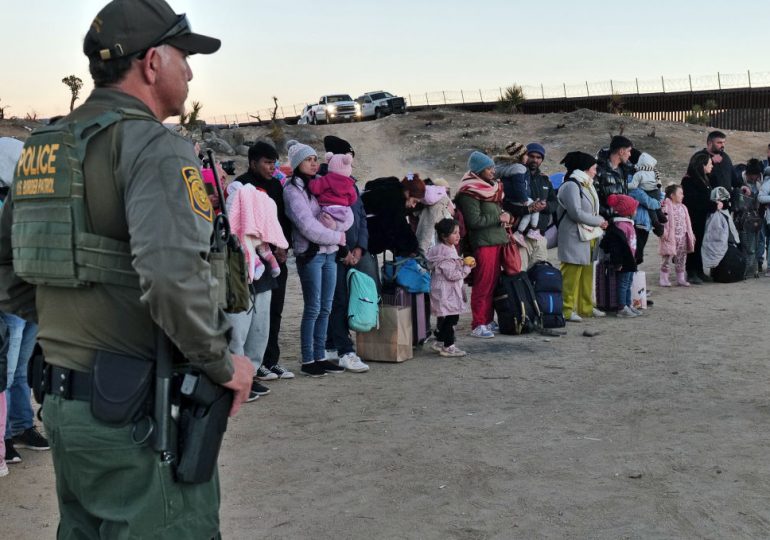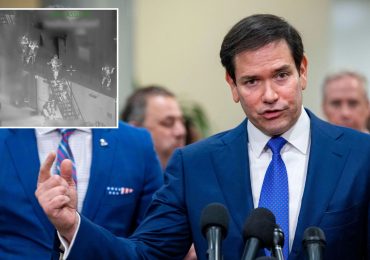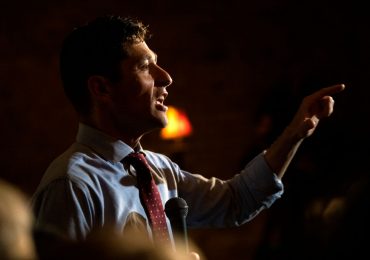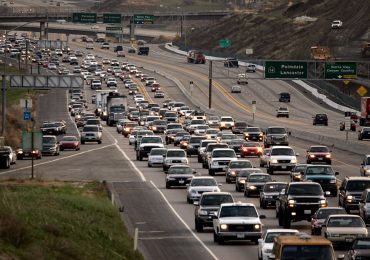One of the most basic facts of American political life today is Republican opposition to immigration. According to Gallup, 73 percent of Republicans would prefer to see immigration levels decreased. All the current contenders for the GOP presidential nomination have sharply criticized the Biden Administration on border security, vowing if elected to crack down on illegal immigration, and Donald Trump and Ron DeSantis have proposed policies that would reduce legal immigration as well. Republicans in Congress are so concerned about the flow of migrants across the Southern border that they won’t move forward with President Joe Biden’s emergency aid request for Ukraine unless Democrats agree to a deal that would make it harder for people to seek asylum.
[time-brightcove not-tgx=”true”]
But if you think about it, there are good reasons for Republicans to favor more immigration.
Consider religion. In general, the more modern a society becomes—the greater its advances in science, technology and education, the better developed its capitalist economy, the more urban its population—the less sway that religious institutions have over public life, and the less significance that religious beliefs and practices hold for its members. The US has been slower to secularize than Canada or Western Europe, which shows that the process isn’t always straightforward. But as sociologists Isabella Kasselstrand, Phil Zuckerman, and Ryan Cragun have demonstrated, the situation is now changing, with every new birth cohort “less religious than the one before.”
Data from the General Social Survey indicate that in the early 1990s, about 60 percent of Americans aged 18-34 said they believed in God and had no doubts. Today that number stands at 36 percent. Over that same period, the proportion who could be described as atheist or agnostic more than doubled, to 22 percent. In recent years of the survey, about four out of ten younger adults have said that they never attend religious services.
The decline of American religiosity worries many on the right. Sixty-one percent of Republicans and Republican-leaning independents tell pollsters that religion is “very important” to them and more than half of Republicans believe that the US should be a Christian nation. Vivek Ramaswamy has made the restoration of faith central to his campaign, as did Mike Pence before he dropped out of the race.
Immigration, however, is a major bulwark—perhaps the major bulwark—against secularization.
Immigrants per se aren’t any more religious than Americans born here, even though many hail from deeply religious nations. This could be because the U.S. remains unusually religious for a country with its level of economic development, because people with strong attachments to a religious community are less likely to migrate, or because moving from one country to another can disrupt religious habits.
But religion plays an outsized role in the lives of certain immigrant groups and their families. For example, while the religiosity of Latino Americans (two thirds of whom were born in the U.S.) may be ebbing somewhat, Latinos are still more religious on average than others, which means that as the Latino population swells through new waves of immigration or higher fertility rates, it will offset religious losses elsewhere.
Churches, temples, and mosques serving immigrant communities are among the most vibrant centers of worship in the nation, offering new Americans powerful religious experiences alongside essential social support. Were it not for migration from Latin America, U.S. Catholicism would be far weaker than it is: the Church, reeling from membership declines stemming from sexual abuse cases, has found new life in the South and West by ministering to large Latino populations. Immigrants are also reviving evangelical faith traditions like Pentecostalism.
Mr. Ramaswamy exemplifies the religiosity that can be found in many immigrant households: his Indian parents raised their American-born son a devout Hindu. As a group, Indian Americans lean strongly Democratic, making Mr. Ramaswamy’s politics an outlier, but an added bonus of migration for the right is that at least on social and moral issues, recent immigrants tend to have more traditional views (although this varies by country of origin, age, and education level.) The tension between such views and a surging progressive movement may help account for gains the GOP was able to eke out in many immigrant neighborhoods in 2020.
Economic prosperity is another conservative priority. (It’s a priority for liberals as well.) The evidence on this score is that immigration helps American workers more than it hurts them.
In a seminal 1990 study, the economist David Card looked at what happened to the labor market in Miami after the Mariel Boatlift of 1980, when Fidel Castro allowed 125,000 Cubans, many of them political dissidents, to leave the country. Thousands wound up in Miami, and one might expect that by competing with other workers, they would have lowered wages and raised unemployment. But Card found that neither of these things had occurred. The reason was that industry in Miami was already set up to make use of Cuban workers’ skills. Employers could therefore accommodate the surge, bringing new immigrants on board as previous employees “moved to more desirable jobs.”
Although research on migration surges elsewhere has provided additional nuance to Card’s findings, the general economic consensus now is that the Miami study spoke to a broader insight. In the short term, large increases in immigration may lower wages or employment in the occupations where those immigrants seek work. Over the longer term, however, immigration provides employers with an opportunity to expand their businesses, adding jobs to their payroll and ramping up production. Immigration thus “grows the pie,” canceling out most if not all of the negative wage or employment effects.
In societies like ours with declining fertility rates, stalled population growth, and chronic labor shortages, immigration’s role in boosting productivity is all the more important. This is why, in states like Texas, the business faction of the GOP tends to take a softer stance on immigration than other conservative groups. On top of that, immigration seems to promote innovation.
What about inflation, a more specific economic issue that will be on the minds of many Republican voters next November? More immigrants means more consumers, and higher demand inevitably raises prices, right?
Not necessarily. The economist Saul Lach studied how prices for consumer goods in Israel changed after hundreds of thousands of migrants from the former USSR moved there at the beginning of the 1990s. He found that the higher the ratio of such immigrants in a city’s population, the lower prices tended to be—perhaps, as Dr. Lach speculated, because the immigrants were very poor and had no “brand loyalties,” forcing retailers to discount their products. In a similar vein, economist Filipa Sá discovered that increases in migration to communities in the U.K. reduced housing prices in those areas. Xenophobic residents with more money didn’t want to live among the immigrants and moved, so the areas became more affordable.
Immigrants are often willing to take jobs that others would not, which can also lower prices. The economist Patricia Cortes found that sizable increases in the number of unskilled immigrants in U.S. cities between 1980 and 2000 did reduce wages, but primarily for people already working in immigrant-intensive jobs like housekeeping and landscaping. Partly because of those decreased wages, however, the cost of the related services went down—by about 10 percent, in Dr. Cortes’s estimate—increasing the purchasing power of other Americans.
Do immigrants drag down the economy by relying on welfare benefits and other forms of public assistance? The suggestion that they do is politically powerful: the native-born overestimate immigrant reliance on welfare so much that mere mention of immigration reduces support for redistributive economic policies.
The fact is that nearly half of new immigrants nowadays have college degrees. Many of these individuals are high-skill professionals here to work in critical fields: 20 percent of physicians in the U.S. were born abroad. They’re not using much public assistance.
It is true that poverty rates for immigrants are higher than for U.S.-born Americans—16 versus 7 percent in 2021, according to one recent analysis. Whether immigrants living under the poverty line are eligible for public assistance depends on their immigration status and the kind of safety net program you’re talking about, but total government outlays (including welfare spending) to support first generation immigrants are not insubstantial, amounting to about $11,360 per person in 2018, according to the Cato Institute.
Yet the same Cato study found that the average immigrant made a “fiscal contribution” of about $16,200, between taxes they paid themselves and taxes paid by their employers on increased productivity. In other words, immigrants put more into government coffers than they took out.
Finally, there’s crime, which law-and-order conservatives almost inevitably link to immigration, as in Donald Trump’s claim that “when Mexico sends its people, they’re not sending their best… They’re bringing drugs. They’re bringing crime. They’re rapists.”
That dangerous drugs, including fentanyl, are being smuggled across our nation’s borders is unquestionable and cause for legitimate concern. But as for the rest of Mr. Trump’s assertion, the research shows that immigrants, both documented and undocumented, commit serious crimes at lower rates than people born in the U.S. While some studies find no connection between the concentration of immigrants in an area and crime rates, others find that as this concentration rises, the area tends to become safer for everyone. One reason for this bound to appeal to conservatives is that immigrant neighborhoods have a higher proportion of two-parent families, which are better able to monitor the behavior of teenagers. All told, the growth of the foreign-born population in recent decades likely contributed to the significant reduction in violent and property crime seen in the U.S. between the early 1990s and the start of the pandemic.
Some would argue that what really motivates conservative opposition to immigration is xenophobia and racism. This hypothesis might help explain why white evangelical Christians tend to be hostile to immigration, despite how important it’s been for filling the pews: perhaps they prefer a version of Christianity with white pastors and congregants. Racism could also account for anti-immigrant sentiment in rural parts of the country that are desperate for more workers, and where it would manifestly be in people’s economic interests to welcome newcomers with open arms.
Whatever the motivation, conservative antipathy to immigration has long stood in the way of comprehensive immigration reform. The best hope for such reform (once the Ukraine aid stalemate is resolved) may be the Dignity Act, a thoughtful piece of legislation introduced earlier this year by Representative María Salazar, a moderate Republican from Florida, and Representative Veronica Escobar, a Democrat from Texas. The Dignity Act strengthens border security—with attention to humanitarian considerations—while expanding opportunities for legal immigration and offering pathways to legal residence for undocumented migrants. The bill has some bipartisan support and the backing of the US Chamber of Commerce but is effectively dead in the water because of opposition from the hard-right in the House.
That is a shame. If Republicans were to take another look at the facts, they might see that making America more immigrant-friendly isn’t a capitulation to the left; it’s the right thing to do.
Leave a comment
















